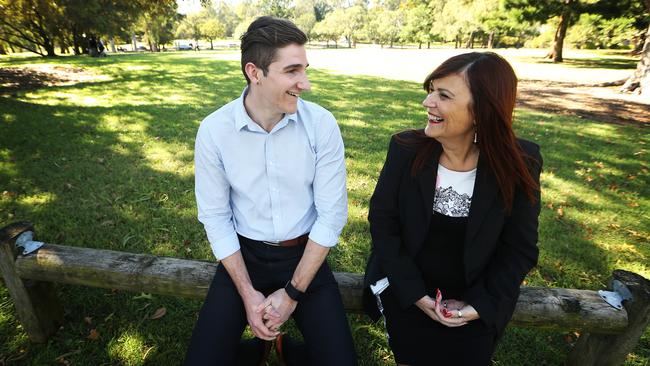Ageing population: generation gaps can work wonders
As the population ages there is a growing need for companies to manage the diverse range of generations they employ.

As the Australian population ages and the federal government prepares to lift the retirement age, there will be a growing need for companies to manage the diverse range of generations they employ.
From the emerging generation Z to baby boomers, age gaps of close to 50 years are already occurring in some workplaces.
Rather than becoming an issue if leaders fail to recognise differences, Randstad employment market analyst Steve Shepherd says age groups can learn from each other.
“It creates lots of opportunities because we’ve got four generations working together in the workforce and, yes, we’re going to see people working longer because they need to or because the government is going to make them,” Shepherd says.
“The challenge for business is dealing with these different groups. They’re going to have different needs, different requirements, there are going to be more demands for flexibility.”
Randstad’s Workmonitor employment report has found less than half of Australian workers think their employers are prepared to meet the demands of generation Z workers — those aged 14 to 19 — as they enter the workforce.
The report found different generations are likely to work differently — from older workers who are used to sitting in cubicles or offices to those who prefer collaborative spaces, hot desking or working from home.
They have different ideas about the hours they should be tied to the desk. And they view flexibility in different lights.
Shepherd says older workers often consider flexibility as providing the opportunity to work part time or hours that suit caring for elderly relatives or grandchildren. Younger workers see flexibility provisions as allowing them to work from home or elsewhere, or to start early or mid-morning. The Workmonitor found 73 per cent of Australian workers thought generation Z workers were more inclined to demand and expect flexible working arrangements, and it will only increase as businesses evolve.
“The younger generation looks at flexibility in different ways, not so much in part-time hours but more so in ‘why do I have to work nine to five in a 24/7 world’, or when they’ve got all of these devices which they can use,” he says.
Shepherd says the challenge lies in how managers and executives manage workers, and keep them working together on projects and learning from each other. He says communication is also important, ensuring there are no barriers between any age groups or between skill levels of workers. It allows for diversity of thought.
“The challenge is how do you motivate these people when you’ve got different styles of working, and being able to deliver against that rather than saying we’re going to have these fun days around doing an activity, but it might not be suited to older workers.”
Shepherd says young people will often tell him that working with older people is like working with their mother or their mother’s friends. Others raise concerns about not understanding the motivations of their younger colleagues, who are often described as wanting to get to the top as soon as possible without working hard to get there.
A good leader, Shepherd says, can leverage off the different skills of the diverse generations in their office. That could mean older workers mentoring younger colleagues, and generation Y or Z workers helping others with social media or technology.
“We’ve all heard stories about chief executives learning about social media from younger workers,” he says.
“And if it’s a younger person coming into your organisation, they have a fresh set of eyes and ask questions about how things work or see things differently.”
For companies to survive Shepherd says they will need to engage all age groups, break down stereotypes and even hold workshops around diversity.
“It’s about making everybody feel valued and they have a contribution to give to the business.”
***
Generations enjoy best of both worlds
Joan Chapple, 64, laughs easily and gets along well with her colleague Brad Thorne, 23. They both battle stereotypes, and are both highly valued members of their NSW government teams.
But Chapple, who is about to celebrate 50 years in the workforce, has no plans to retire to look after her grandchildren and is happy learning from younger workmates.
“I’ve learned so much about IT since I’ve been here. I think I’m a bit of a wizard now,” Chapple says.
The workforce has changed significantly since Chapple began her first job at 15 on a telephone exchange in Britain. In the 1960s and 70s people regularly left school early and did not go on to further education, starting long-term careers in their teens.
Students now are likely to study longer, and most at least finish high school.
Thorne, who works in a clerical position, started in retail after he finished high school, then took on a government traineeship. He has been there for six years.
“I socialise a bit more with the younger people, go out to lunch with the younger people and on weekends,” Thorne says. “But it doesn’t matter the age in my line of work.
“Some characters tend to treat you differently because you’re younger but I’m not the only person who gets it and there are individuals that don’t do that and they treat you on merit and abilities and that’s always nice.”
Thorne says he has learned about finance and profited from life advice from older colleagues, particularly as he builds his first house. And he has helped others with the new operating system.
“One of the guys here … he’ll say, ‘I need your fresh eyes because you’re just out of school.’ It’s a compliment, but it’s a backhanded compliment. It’s nice they asked for help, but I finished school six years ago.”


